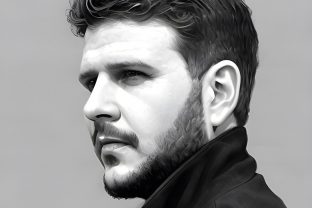The Maestro: Ennio Morricone's innovations and personality are woven into dance music
It is no exaggeration to say that Ennio Morricone profoundly influenced overground and underground dance culture
The Maestro is dead... but what a life! Ennio Morricone composed his first piece of music at the age of six, was working right up until his death at 91, and in between that, he revolutionised both music and cinema as much as perhaps any other individual in modern history. Whole books have been and will be written about his soundtracks: maybe more than any other composer he defined what we mean when we use the term “cinematic” about music, and from Radiohead to U2 to Jay-Z, the biggest acts in the world regularly adopt his aesthetic as a shortcut to grandiosity, suspense and general dramatic power. But his influence includes dance music, too. It is no exaggeration to say that his innovations and musical personality are as woven into overground and underground dance culture as those of James Brown, Kraftwerk or King Tubby.
That influence is sometimes direct. Morricone’s work, especially those spaghetti western themes, has been sampled relentlessly. From The Orb’s ‘Little Fluffy Clouds’ to the timeless speed garage banger ‘Gunman’ by 187 Lockdown, from Flying Lotus to Skepta, 808 State to Amon Tobin and throughout the entire histories of hip hop, rave, jungle and drum ’n’ bass, his motifs are as omnipresent as any classic funk, reggae or electro samples. And his records are played by DJs too. Listen to any classic Cafe del Mar tape from the start of the 90s and you’ll hear Jose Padilla spin any number of his more romantic themes. Cinema Paradiso, Gott Mit Uns, Once Upon a Time in America, Giu la Testa, Once Upon a Time in the West: every one of them a CdM classic and instrumental in creating the Balearic chillout aesthetic. His ‘Come Maddalena’ from the 1971 Maddalena soundtrack, remixed for 12” release in 1978, became a cosmic disco and Balearic dancefloor staple, still eminently playable now, and he’s made more than his share of fuzz guitar psyche-funk classics like ‘Svolta Definitiva’ from the 1970 Charles Bronson hitman drama Città Violenta which are beloved of crate digger DJs.
Read this next: The 20 best tracks that sample Blade Runner
But the influence is woven deeper into the fabric of music than that too, because as well as being a composer of endlessly moving and memorable themes, Morricone was a pioneer of sonics too. From the start of the 60s, when his career was taking off, his recordings always sounded incredibly advanced. Not only would he incorporate a huge range of influences, from bossa nova to free jazz to avant garde tape experiments into what were ostensibly mainstream compositions, but he had a unique love of and understanding of the sounds and rhythms of each instrument he utilised. Listen back to any of his soundtracks even from the early 60s, and it’s striking how advanced they sound: strings and voices become abstract drones, rhythm is allowed to be the lead as much as melody, the individual clicks and booms of percussion instruments brought centre stage and treated with relish. The more you’ll listen the more you’ll hear him prefiguring things that soul, funk and disco producers did a decade later. And by the time you get to something like 1971’s L'istruttoria è chiusa: dimentichi Morricone is practically inventing industrial music.
From the beginning, too, he incorporated not just experimental studio techniques of reverb and mic placement into his arrangements to conjure space and place, but the art of the “foley room” – the movie studio sound effects department – most famously with gunshots in his spaghetti western work. And this in turn was influential on one of the most important developments in all of modern musical history: the invention of dub. Spaghetti westerns were hugely popular in Jamaica, and are referenced lyrically and musically throughout ska, rocksteady and reggae – and it doesn’t take a PhD in musicology to spot the influence of both the spaciousness of Morricone’s soundtracks and his use of sound effects as music on the experiments of King Tubby, Lee “Scratch” Perry and co. Without dub, so many subsequent developments in dancefloor music would never have happened, so it’s fair to say that Morricone’s influence – literally – echoes on down through pretty much all the music we love today via that route.
Read this next: Junior Tomlin is the Salvador Dali of rave art
It’s hard to think of any musician who’s quite as successfully spanned from the ultra mainstream to the ultra experimental quite as consistently as Morricone did. He’s written the romantic themes and chillout classics still collected on petrol station and supermarket checkout CDs, but also slipped some of the most avant-garde experiments into popular consciousness via cheap pulp movies and Hollywood blockbusters. He could turn on a dime from lighter-than-air groove to terrifying discord to heart-stirring climax. And perhaps the most extraordinary thing is that, for all his influence, for all that he’s been sampled and referenced, there are still huge untapped reservoirs of his work that could still yet inspire whole new genres. A jump down the Morricone rabbit hole, which many have been doing on streaming services since his death, is never time wasted. But when you do it, make sure you go deep. Yes, there are enough classics to keep you going for days, but search for “Morricone Experimental” for starters, and look for his obscurities, because whether you love abstract club or easy listening, disco or avant hip hop, we can stone cold guarantee you will find something that turns your head and makes you appreciate the Maestro’s genius all over again.
Joe Muggs is a regular contributor to Mixmag. Follow him on Twitter here and find his Facebook here



